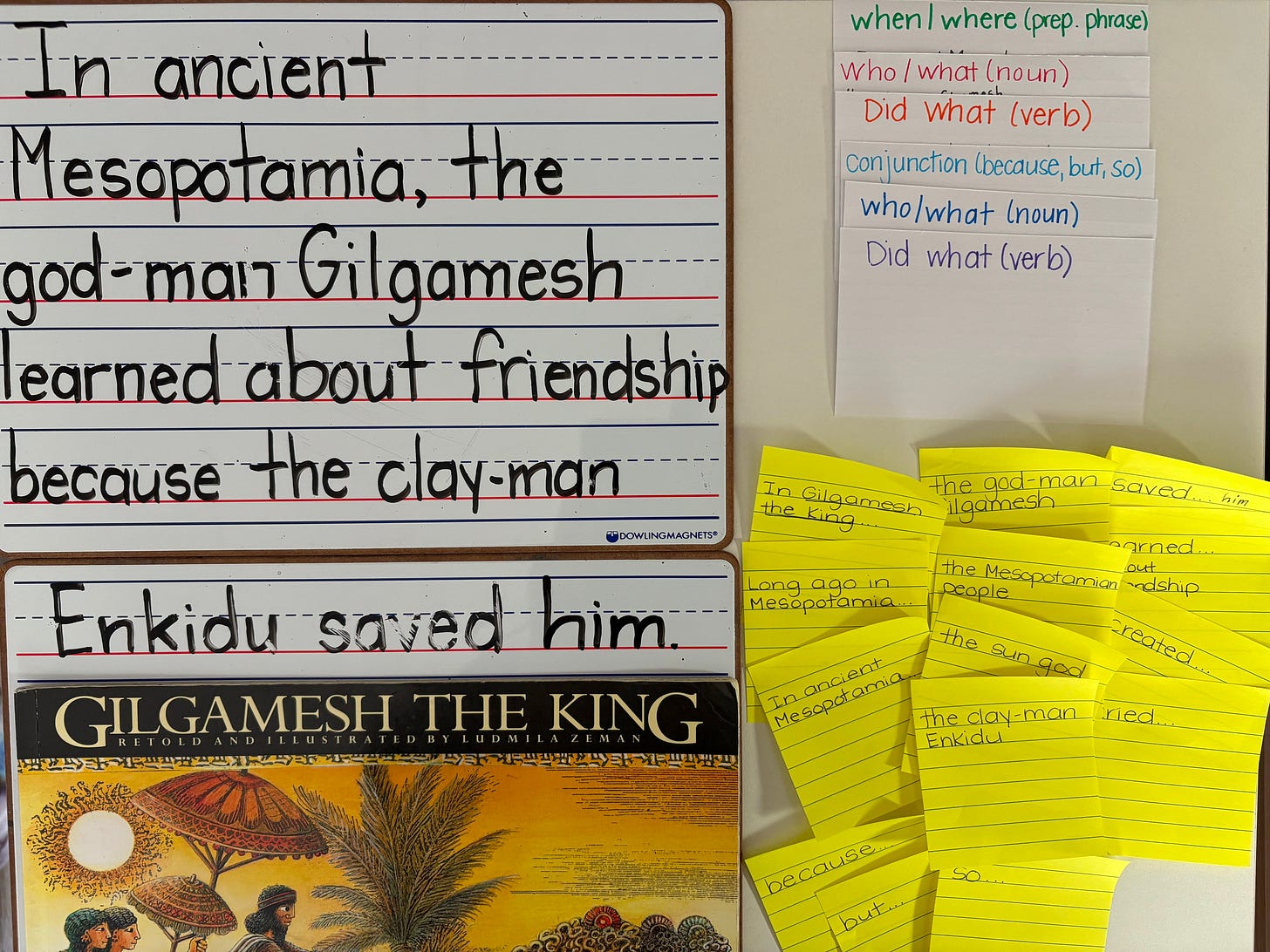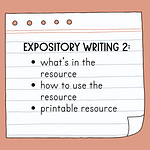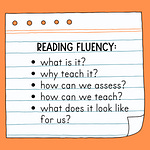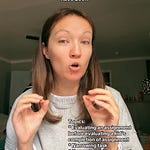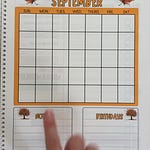I am about to walk you through a lesson on a specific text, but you could choose any text!
Objective:
Kids summarize a text in one sentence (framework provided).
Prep:
Choose your text (my example in the video is Gilgamesh the King by Ludmila Zeman).
Pre-read the text
Practice writing a few one-sentence summaries of the text following a specific framework (provided below)
On separate post-it notes (shown in image), write down multiple options for each part based on the text (see image below for the ones I did for Gilgamesh the King).
Hide post-it notes around the room.
Somewhere (I did on a stand-up dry erase board), write the parts of your summary sentence’s framework (one card per part like in the image).
Summary Framework I Used:
When/where (prepositional phrase) + Who/what (noun/subject) + Did what (verb) + *optional* prepositional phrase + Conjunction + Who/what (noun/subject) + Did what (verb) + *optional* prepositional phrase
Example summaries:
In ancient Mesopotamia, the god-king Gilgamesh grew cruel, but the clay-man Enkidu helped him learn kindness through friendship.
In Gilgamesh the King, the god-man Gilgamesh of ancient Mesopotamia learned kindness because Enkidu saved him from death.
The one we wrote (featured in picture): In ancient Mesopotamia, the god-man Gilgamesh learned about friendship because the clay-man Enkidu saved him.
Lesson Flow:
Tell kids you’re going to read aloud a text and then write a one-sentence summary of it. (Review or teach what a summary is if necessary.) You can show them the framework now if it helps.
Read aloud the text.
Go over the framework of the sentence summary.
Tell kids that there are post-it notes hidden around the room that have things about the text they could use in their summary.
Have kids find the hidden post-it notes.
Once all post-it notes have been collected, it’s time to sort! Sort based on conjunctions, prepositional phrases, nouns, and verbs.
I’d start with having them choose the first prepositional phrase that tells when/where. If they haven’t learned prepositional phrases, you might tell them that prepositional phrases begin with words such as “in, by, before, after, during” and give them a few examples.
Together, rearrange the pieces to pair up verbs with nouns. For example, “saved” makes sense with “clay-man Enkidu” but not “god-man Gilgamesh.” This might take some time to arrange in a way that summarizes and makes sense.
Once you’ve assembled the summary, have them copy, trace, and/or illustrate it.
Image of the components I used during the lesson:
(not pictured: the stand-up dry erase board I magnetized the index cards to)
I hope you found this helpful, and let me know if you try it! :)
-Danielle


